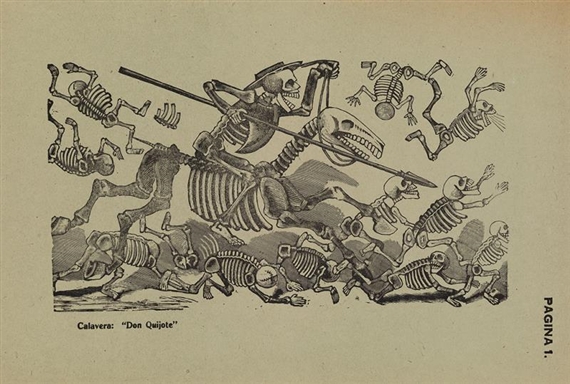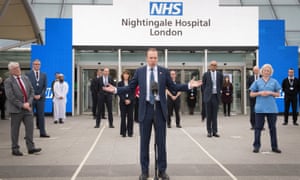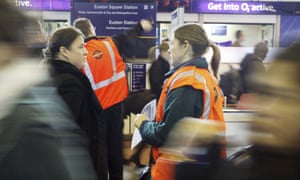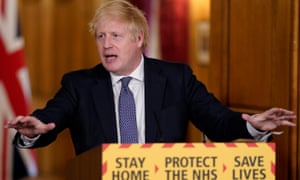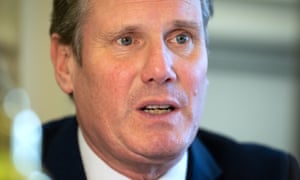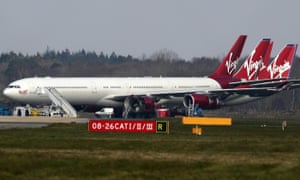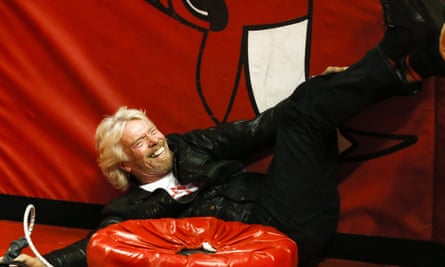Special Report: In shielding its hospitals from COVID-19, Britain left many of the weakest exposed
LONDON (Reuters) - On a doorstep in the suburbs of north London, three-year-old Ayse picked up a tissue to wipe away her grandmother’s tears - tears for one more victim of the virus.
Ayse Mehmet, whose daughter Sonya Kaygan died from coronavirus disease (COVID-19), has tears wiped by her three-year-old granddaughter, also named Ayse, at her home in Enfield, Britain, April 27, 2020. Picture taken April 27, 2020. REUTERS/Peter Nicholls
The little girl was waiting for her mum, Sonya Kaygan. Her grandmother hadn’t broken the news that Kaygan, 26, who worked at a nearby care home, was dead, one of over 100 frontline health workers killed by the coronavirus in Great Britain.
The grandmother, also called Ayse, spoke through sobs. “Why? Why?” she repeated. Why couldn’t she visit the hospital to say her goodbyes? Why did so many die in her daughter’s workplace? At least 25 residents since the start of March, of whom at least 17 were linked to the coronavirus. It was one of the highest death tolls disclosed so far in a care home in England. And why did Kaygan and her colleagues resort to buying face masks on Amazon a month ago, protection that arrived only after she was in hospital?
A Reuters investigation into Kaygan’s case, the care home where she worked, and the wider community in which she lived provides an intimate view of the frontline of Britain’s war on the coronavirus. It exposes, too, a dangerous lag between promises made by Prime Minister Boris Johnson’s government and the reality on the ground.
Even as the government was promising to protect the elderly and vulnerable from the deadly virus, local councils say they didn’t have the tools to carry out the plan, and were often given just hours to implement new government instructions.
Policies designed to prevent hospitals from being overwhelmed pushed a greater burden onto care homes. With hospitals given priority by the government, care homes struggled to get access to tests and protective equipment. The elderly were also put at potentially greater risk by measures to admit only the sickest for hospital treatment and to clear out as many non-acute patients as possible from wards. These findings are based on documents from government agencies seen by Reuters, interviews with five leaders of local authorities and eight care home managers.
It is too early to reach final conclusions about the wisdom of these policies. Still, staff and managers of many care homes say they believe the British government made a crucial early mistake: It focused too much attention on protecting the country’s National Health Service at the expense of the most vulnerable in society, among them the estimated 400,000 mostly elderly or infirm people who live in care homes across Britain.
The government summed up that policy in the slogan “Protect the NHS.” The approach gave the country’s publicly-funded hospitals priority over its care homes. A UK government spokesman defended the strategy. “This is an unprecedented global pandemic and we have taken the right steps at the right time to combat it, guided by the best scientific advice.”
The effects of this approach have been felt desperately in Elizabeth Lodge, in Enfield, north London, where Kaygan worked.
The first coronavirus test of a resident of the Lodge only took place on April 29. That was 34 days after the first suspected case at the home, said Andrew Knight, chief executive of residential services at CareUK, a private company which operates the home. It was also 14 days after Matt Hancock, the UK health secretary, pledged tests would be available to “everyone who needs one” in a care home.
“The government’s response on testing has come way too late to have any meaningful effect on keeping the virus out of our homes,” said Knight, the CareUK executive, in a statement to Reuters.
So far, at least 32,300 people have died in Britain from the coronavirus, the highest toll in Europe, according to official UK data processed by 2 May. Out of those deaths, more than 5,890 were registered as occurring in care homes in England and Wales by April 24, the latest date available. These figures don’t include care home residents who were taken to hospital and died there.
Many care home providers believe the figures understate the number of deaths among care home residents because, in the absence of testing, not all are being captured. During the 10 weeks prior to the outbreak, including the height of the flu season, an average of 2,635 people died each week in care homes in England and Wales. By April 24, that weekly death toll had risen to 7,911. According to Reuters calculations, the pandemic has resulted in at least 12,700 excess deaths in care homes.
“I think the focus early on was very much on the acute sector,” or urgent hospital treatment, “and ensuring hospitals were able to respond in an effective way,” said Graeme Betts, acting chief executive of Birmingham City Council, which oversees the UK’s second-biggest city. “And I think early on care homes didn’t get the recognition that perhaps they should have.”
Helen Wildbore, director of the relatives and residents association, a national charity supporting families of people in residential care, said while it was right for the initial focus to be on protecting the NHS, “I think it has taken too long for the government to turn its attention” to vulnerable people outside hospital. “I think it’s fair to say that the sector has felt like an afterthought for quite a long time.”
Jeremy Hunt, a former Conservative Party health secretary and now chairman of the House of Commons health select committee, advocated banning visits to care homes by friends and family from early March, advice that wasn’t followed. Speaking to Reuters, he drew a parallel between the UK’s response to the coronavirus and the way it deals with peak winter demand for hospital services.
“What happens with any NHS winter crisis is the focus of attention immediately switches to the hospitals and dominates the system’s thinking,” he said. “Many people in the social care sector told me exactly the same thing happened with COVID-19.”
The government spokesman said protecting the elderly and most vulnerable members of society had always been a priority, “and we have been working day and night to battle coronavirus by delivering a strategy designed to protect our NHS and save lives.”
THE COCOON
Born in Northern Cyprus in 1993, Sonya Kaygan had come to the UK after studying English. She settled in Enfield, a north London borough of 334,000 people with a large community of Turkish origin, and one particularly hard-hit by the virus pandemic.
Kaygan lived with her mother and together they looked after her child. Both worked in different care homes: She worked night shifts and her mother worked the day shift. Kaygan’s monthly wages for three or four weekly 12-hour shifts added up to a take-home pay of about £1,500 - just short of the monthly rent of their home.
By the time a “lockdown” was imposed by the prime minister on March 23, the virus was spreading fast and Kaygan was beginning to feel sick. “She started feeling a bit uncomfortable,” her uncle Hasan Rusi said. “She had a temperature and was coughing. It might have been a cold, it might be a virus.”
Established plans drawn up by the government for dealing with a flu pandemic had always been clear that care homes could be a place for infection to spread. But on February 25, Public Health England, a government agency overseeing healthcare, stated it “remains very unlikely that people receiving care in a care home or the community will become infected.”
RELATED COVERAGE
A London community shattered by the coronavirus
The guidance was widely reproduced on care home websites and stayed in force until March 13. It meant that few care homes restricted visits and few families withdrew their relatives from homes. No plan was put in place for testing staff. A government spokesman said that advice “accurately reflected the situation at the time when there was a limited risk of the infection getting into a care home.”
On March 12, the government shifted from what it termed a “contain” to a “delay” phase, after the World Health Organisation declared an international pandemic. The UK now focused efforts on mitigating the spread of virus through the general population, allowing “some kind of herd immunity” to develop, as the chief scientific adviser, Sir Patrick Vallance, explained on BBC radio on March 13. But, said Vallance, “we protect those who are most vulnerable to it.”
David Halpern, a psychologist who heads a behavioural science team - once nicknamed the “nudge unit” - advising the UK government, had expanded on the idea in a separate media interview on March 11. As the epidemic grew, he said, a point would come “where you’ll want to cocoon, you’ll want to protect those at-risk groups so that they basically don’t catch the disease.”
Nonetheless, Reuters interviews with five leaders of large local authorities and eight care home managers indicate that key resources for such a cocoon approach were not in place.
There weren’t adequate supplies of protective equipment, nor lists of vulnerable people, they said. National supply chains for food were not identified, nor was there a plan in place to supply medicines, organise volunteers, or replace care staff temporarily off sick. Above all, those interviewed said, there was no plan for widespread testing in vulnerable places like care homes or prisons, let alone an infrastructure to deliver it.
On March 23, Johnson announced another shift in strategy, replacing the mitigate-plus-cocoon approach with a broader lockdown. Schools, pubs and restaurants were shuttered, sport cancelled and everyone was told to stay at home.
For local leaders, caring for the most vulnerable became increasingly challenging. Typically, they said, new plans were announced in an afternoon national press conference by a government minister, with instructions to implement them, sometimes the next day, arriving by email to councils later that night. Ministerial promises, handed off to the councils, included drawing up a “shield list” of the most vulnerable, delivering food to them and organising and delivering prescription medicines. Even plans for using volunteers were announced nationally, without taking account of volunteer infrastructures that many councils had in place.
“From our vantage point, it sometimes looked like policy made up on the hoof,” said Jack Hopkins, leader of Lambeth Council in south London, an early hotspot for the virus outbreak. Local councils knew they had to act quickly, but there was no dialogue about how things should happen. “It felt very much like government by press release, with local government left to pick up the pieces,” Hopkins said.
It was the same experience in Birmingham, which was also hit hard by the virus. Betts, the council’s chief executive, wants to avoid dishing out criticism in a situation that is “new for everyone.” But, he said, “it did make it quite challenging from a local authority perspective, when, you know, the prime minister says at 5 pm or 6 pm that something’s going to happen. Eleven o’clock or midnight you get some guidance on it, and you’re meant to be off and running in the next day.”
The most acute problem identified locally early on was the shortage of adequate personal protective equipment (PPE) for NHS and care home staff. Yet Jenny Harries, England’s deputy chief medical officer, declared on March 20 that there was a “perfectly adequate supply of PPE” for care workers and the supply pressures have been “completely resolved.”
Five days later, Johnson told parliament every care home worker would receive the personal protective equipment they needed “by the end of the week.” This didn’t happen, and more than a month later, the government’s chief medical officer conceded publicly that shortages remained.
According to Nesil Caliskan, leader of Enfield Council, early statements that local shortages were caused by distribution difficulties proved to be a “downright lie.” The government simply didn’t have enough kit, she said.
The government didn’t respond directly to claims that it gave false assurances or insufficient time and support to councils to implement ministers’ instructions. A spokesman said an alliance of the NHS, industry and the armed forces had built a “giant PPE distribution network almost from scratch.” Councils had been supported with £3.2 billion in extra funding to support their pandemic response, he said, and 900,000 parcels of food have been delivered to vulnerable people.
Three days into the lockdown, on 26 March, the nation was urged to stand at their doorstep or window on a Thursday evening and applaud the NHS. Boris Johnson, by now already infected himself, led the cheering on the first occasion.
For some workers in Enfield, the chants left them uneasy. Working 12 hours shifts for barely £9 per hour, below the non-statutory London Living Wage of £10.75, they wondered if those cheers for caregivers were also meant for them.
“I’m one of them,” one care home employee, who asked not to be named, recalls telling her 12-year-old daughter as her neighbours clapped. The daughter teased her: “Oh, Mummy, they don’t talk about you. They talk about the NHS. Mum, do you work for the NHS?”
The caregiver replied: “No. But it’s the same. We care for people.”
The caregiver was one of three workers who recounted their experiences at an Enfield care home run by a firm called Achieve Together. Each described how, after a patient was sent to hospital on March 13 and confirmed to have the coronavirus, staff were issued with thin paper masks. After a fortnight, staff were told the masks should be saved for dealing with patients with symptoms, and they were taken away. And although several staff developed symptoms and had to isolate, no tests were available. A spokesperson for Achieve Together said staff had access to “more than sufficient supplies of PPE, including face masks and face shields, which are supplied and worn directly in line with Government advice.”
One night, caring for a resident with a lung infection who hadn’t been tested, she’d worn a thin blue surgical mask as she performed close-up procedures like feeding him and brushing his teeth.
The day she spoke to Reuters, April 24, health secretary Matt Hancock had reiterated to the BBC that tests were available for care workers. But for now, none was available for this care worker. Her only option was a drive-through centre, but she had no car.
“I want to be checked and really want to be checked as soon as possible,” she said. “If I had the choice.”
The spokesperson for Achieve Together described the health and wellbeing of residents and staff as “our absolute priority.” Staff and residents were tested “when the Government made testing available.” The company did not specify when those tests took place. It declined to comment on details of the home, citing a need to protect patient privacy.
AN INVISIBLE TRAIL
Kaygan’s workplace, the Elizabeth Lodge, in a leafy Enfield suburb, was built in the grounds of two former hospitals of infectious diseases. It is operated by CareUK, a large privately owned healthcare provider, and normally home to about 90 residents, looked after by 125 staff.
The borough has been hit hard by the coronavirus, with Enfield Council recording outbreaks in at least 42 out of 82 care homes, according to the council. The council and the Care Quality Commission, which regulates the sector, declined to disclose individual death tolls, citing privacy.
Elizabeth Lodge, according to several people with direct knowledge, was one of two Enfield homes most savagely stricken by the virus. The other, these people said, is Autumn Gardens. A senior manager at Autumn Gardens, which is privately owned, declined to comment.
Determining how Kaygan and so many residents at Elizabeth Lodge and other homes became infected will be hard. That is partly because, as Reuters has previously reported, as the outbreak began Britain had no plan for widespread testing for the virus once it started spreading in the community.
The Lodge’s management says it hasn’t identified the source of the outbreak there. The home began cutting down on visitors from the start of March, with almost all non-emergency visits barred from March 17.
“At this point anyone coming into the home, including team members and essential health care professionals, had their temperatures checked and went through a health screening questionnaire,” CareUK said in a statement to Reuters.
Kaygan’s last day of work was Friday, March 20th, and she called in sick the following week.
On Sunday, March 22, Mother’s Day in England, Kaygan popped round to drop off a bunch of flowers to two relatives, Kenan and his wife Ozlem, who helped bring her up as a child. They spoke on the doorstep. “She told us she had to go back to work. But I was adamant she should stay at home,” Kenan said. The day after, Johnson announced the nationwide lockdown.
According to the Lodge’s management, none of the residents displayed symptoms until March 26, in the home’s York wing. This was six days after Kaygan last worked, and 11 days after she had last worked in the York wing.
Across Enfield care homes, 48 cases of COVID-19 had been identified by March 27 and at least two people had died of the disease. By then all homes had essentially banned all visitors.
So how did infection take hold in care homes?
According to several care home managers, a key route for infection was opened up by an NHS decision taken in mid-March, as Britain geared up for the pandemic, to transfer 15,000 patients out of hospitals and back into the community, including an unspecified number of patients to care homes. These were not only patients from general wards. They included some who had tested positive for COVID-19, but were judged better cared for outside hospital.
In a plan issued by the NHS on March 17, care homes were exhorted to assist with national priorities. “Timely discharge is important for individuals so they can recuperate in a setting appropriate for rehabilitation and recovery – and the NHS also needs to discharge people in order to maintain capacity for acutely ill patients,” the plan said.
A Department of Health guidance note dated April 2 and published online further stated that “negative tests are not required prior to transfers / admissions into the care home.”
Jamie Wilson, a former NHS dementia specialist and founder of Hometouch, which provides care to people in their own homes, said that, based on his discussions with colleagues in the industry, he believes that care homes across the country had taken dozens of patients at risk of spreading the infection. While noting he wasn’t aware of specific cases, he described what he called an egregious and reckless policy “of sending COVID positive patients back into care homes and knowing that it’s so infectious a disease.”
The UK government didn’t respond directly to the question of whether discharges from hospitals had put the vulnerable at risk. But a spokesman said enhanced funding, testing and quarantine procedures should address those concerns.
One NHS infectious diseases consultant, who manages COVID-19 patients, said sending people sick with the coronavirus back to a care home could, in many cases, be the best thing for the patient, provided they could be cared for in the right way. Ideally, she said, all patients should be tested before transfer, and quarantined for up to a fortnight.
The problem was that most patients had not been tested for COVID-19, and care homes have few facilities to quarantine new arrivals.
In Birmingham, over 300 people were discharged into care homes from the start of March, “which is significantly higher than normal,” said council chief executive Betts. In Enfield, 30 patients were sent to care homes, about average, according to Enfield Council. One care manager in the borough, who manages several homes, said some of those transfers caused concern.
This manager recalled that, shortly after Johnson announced the lockdown, she had an argument with officials at a nearby hospital who wanted her to take back a resident who had been treated for sepsis. The hospital had coronavirus patients at the time. The manager would not name the hospital, to avoid identifying the patient. She said she agreed to the demand on one condition: that the resident, who was not displaying coronavirus symptoms, be tested. But the hospital refused, saying it did not have enough tests to assess asymptomatic patients.
Eventually, the manager backed down. A week or so later, several residents in the home began displaying symptoms consistent with COVID-19, she said. She didn’t give a precise figure. It is not known whether the transferred patient was the source of the outbreak.
“It was just so reckless,” she said. “They were not thinking at all about us. It was like they were saying, let’s abandon the old people.”
At the Elizabeth Lodge, between March 1 and March 19, four new residents arrived - two from hospitals and another two from other care homes. The Lodge’s management said, in a statement, there was no evidence these residents brought the virus into the home, “but we are continuing to review.”
Knight, the residential services chief executive at Lodge operator CareUK, said it was essential that hospital patients be tested before they were transferred. “We need to ensure not just that the test has been done, but that the results are available prior to making the decision about admission” to the home, he said in a statement to Reuters.
TEST, TEST, TEST
On March 12, Britain’s chief medical officer, Chris Whitty, announced the ending of most testing of the general population to focus on patients admitted to hospital. But Vallance, the chief scientific adviser, clarified to parliament a week later there would still be testing in isolated clusters of cases in the wider population.
By April 6, the Enfield council had recorded at least 26 deaths in care homes, and 126 suspected cases. Yet only 10 tests per day were being offered for the thousands of care staff across the whole of north London, said Enfield Council leader Caliskan.
Knight said that at Elizabeth Lodge, no tests were available for staff until after April 15, when Health Minister Hancock announced plans to test all residents and care home workers if they had symptoms. Even after Hancock’s pledge, only six tests were made available to Lodge staff and none to residents, Knight added.
Guidance from the Government, which has struggled to rapidly increase the overall availability of tests, remained that staff should simply stay at home and isolate if symptomatic. In his statement to Reuters, Knight said he and others in the industry had appealed to “senior members of the government to explain the challenges we were facing and how best they could support us.” He didn’t say who he spoke to.
Finally, on April 28, Hancock said all care home residents and staff could be tested even if they were not displaying symptoms. Again, the words didn’t match the experience on the ground.
Lisa Coombs, manager of the Minchenden Lodge in Enfield, home to up to 25 residents, said she had only secured a pack of 10 tests. Eight of these had returned a positive result. She’d been unable to secure tests for a further 10 residents even though some were displaying symptoms.
“What the government says is a load of rubbish,” she said. I “I am angry because we are not being supported.” She declined to discuss how many residents have died.
At Elizabeth Lodge, no residents were tested until April 29, said Knight. Even after that date the government’s Care Quality Commission, which has been supplying tests to homes, only provided enough for residents showing symptoms of coronavirus. Things improved “in a very limited way” in the last two weeks of April, said Knight, and now “appear to be gaining momentum.”
Getting access to testing on a meaningful scale now could reduce the impact of the virus in the coming months, he added.
A government spokesman said that a policy of testing everyone prior to admission into care homes was now being instituted, with a recommendation that hospital patients discharged into care homes are isolated for 14 days, even with negative test results.
MASKS
Sonya Kaygan, her mother Ayse recalled, never said much about her work or conditions at the Lodge. But one day, at the start of the outbreak, Sonya saw the long-sleeved gloves that her mother, a caregiver at another home, was using. “We don’t have those at our place,” Kaygan said. The Lodge told Reuters staff had all the equipment that was required.
Unbeknown to her family, Kaygan had ordered surgical facemasks on Amazon. They arrived in early April after she was hospitalized. Other carers at the Lodge ordered masks, too, said another staff member. And after Kaygan’s death, a different fellow employee posted on Twitter: “I work there and all of this has (been) very hard on us all and every one is right. We as carers don’t have enough PPE.”
Another employee at Elizabeth Lodge told Reuters that although staff raised concerns, many had to operate for weeks without face masks or visors. “I was petrified. Every time I went in there, I worried for myself, my family, the people living there, my colleagues,” she said.
She said at the start of March, she remembers two meetings where managers discussed with staff how they would respond if there was a coronavirus outbreak. She said employees questioned why they did not have more protective equipment. The management responded saying they were doing their best to bring more in.
Reuters could not independently verify this account. The Lodge’s management told Reuters that neither Kaygan nor any other employee raised concerns to managers about protective equipment.
It said in a statement that at the time Kaygan worked at the Lodge, face masks were not being used. That, according to the home, was because official guidance then recommended such masks were only necessary when working within a metre (three feet) of someone with COVID-19 symptoms. Public Health England said the home’s interpretation was in line with advice then in force that masks were only needed when in personal contact with someone, such as washing.
Across Enfield, supply of PPE was a major problem. According to council leader Caliskan, by the end of March, supplies in some homes were inadequate, and others were running out. The government repeatedly promised to send supplies, but when a much-anticipated delivery by the army arrived at the council depot on March 28, it took just 6 minutes to unload, she said. It contained only 2,000 aprons and 6,000 masks, which aren’t designed for repeated or prolonged use, for Enfield’s 5,500 care workers.
GETTING TO HOSPITAL
On March 31, just after 2 pm, Sonya Kaygan was picked up by an ambulance from the two-up, two-down home she shared with her mother and daughter. Kaygan was finding it increasingly difficult to breathe. As she walked to the ambulance, she turned to her mother and said: “If I never make it back, look after my baby.”
The ambulance crew said Kaygan would be taken to the nearby North Middlesex Hospital, but when the family called there later, there was no one of that name. Uncle Hasan tracked her down to Whipps Cross Hospital in Leytonstone, northeast London. Kaygan made video calls to her family, and asked Ayse to come and visit. But, as is the case in many countries, the hospital wouldn’t allow it.
In an email to Reuters, the NHS trust managing Whipps Cross said all visiting was “currently suspended other than in exceptional circumstances” to stop the spread of COVID-19.
Then news came that Kaygan would be intubated - sedated and put on a ventilator. Her last call was to a family member in Cyprus, about 6 am on April 2. “I’m going in now,” she said.
Kaygan’s hospital admission was swift. Many others have reported difficulties getting in.
Munuse Nabi, 90, lived in a care home in Ilford, East London. She was extremely fragile, with heart, lung and kidney problems. But she was also mentally strong with a pin-sharp memory, able to talk on the phone and flick through TV channels. “She was all perfect,” said son Erkan Nabi, a driving instructor.
In early April, Munuse developed a temperature and a dry and persistent cough, and lost her voice. As she got worse, a doctor examined Munuse by video link. When she began to struggle to breathe, Nabi urged the home to send her to hospital.
A nurse, he said, told him: “We’ve been told not to send people to hospital. Just leave them here. They’re comfortable.” He was upset. “They were trying to encourage me to leave her there basically to die.” He insisted they call an ambulance, and she was taken to hospital.
A spokesperson for the care home involved said staff were “doing everything we can to make sure our residents and colleagues stay safe and well throughout these challenging times.”
This approach to hospitalisation reflects what many homes took to be national guidance. An NHS England policy document issued on April 10 listed care home residents among those who “should not ordinarily be conveyed to hospital unless authorised by a senior colleague.”
The document was withdrawn within five days, after public criticism. The NHS did not respond to a request to discuss the document.
London’s ambulance service also issued new guidance.
Ambulance crews assess patients using a standard scoring system of vital signs. According to the Royal College of Physicians, a professional body for doctors, a patient who scores five or more on a 20-point scale should be provided with clinical care and monitored each hour. A patient scoring five would normally be taken to hospital.
But in early March, London’s ambulance service raised the bar for COVID-19 patients to seven.
“I have never seen a score of seven being used before,” said one NHS paramedic interviewed by Reuters. The medic spoke on condition of anonymity.
On April 10, the required score was lowered to five. In a statement, the London Ambulance Service told Reuters its previous guidance was one of several assessments used and clinical judgment was the deciding factor. Asked if the guidance reflected the national approach, the NHS did not respond.
Possible evidence of restrictions on admissions came in a study of 17,000 patients admitted for COVID-19 to 166 NHS hospitals between February 6 and April 1. The study showed that one-third of these patients died, a high fatality rate.
Calum Semple, the lead author and professor of outbreak medicine at Liverpool University, said, in an interview with Reuters, this indicated, among other things, that England set a “high bar” for hospital admission. “Essentially, only those who are pretty sick get in.” But, he said, there was no data yet on whether that high bar ultimately made people in Britain with COVID-19 worse off. The NHS didn’t comment.
FALSE VICTORY
On the hospital wards of London, by Easter Sunday, April 12, there was a sense of light at the end of the tunnel. Over the long holiday weekend, according to several doctors contacted by Reuters, some hospitals saw just a handful of new admissions.
But on the frontline of the efforts to protect the capital’s most vulnerable people, the worst was far from over. According to an official closely involved in London’s response to the coronavirus, the capital’s mayor, Sadiq Khan, was getting reports that food banks were close to running out. Crisis meetings were held all weekend to replenish stocks.
In Enfield, by Easter Sunday a total of 39 care home deaths linked to COVID-19 had been recorded, and 142 residents had suspected infections. By the end of last month, nearly 100 more residents of Enfield care homes would die. The total in the borough, as recorded by the council, would rise to 136 deaths linked to the virus in care homes by April 30, including care home residents who died in hospital.
On the national stage, the government projected a picture of success. Prime Minister Boris Johnson, at his first daily Downing Street briefing since recovering from coronavirus, said on April 30 that Britain was past the peak and had avoided overwhelming the health service.
“It is thanks to that massive collective effort to shield the NHS that we avoided an uncontrollable and catastrophic epidemic,” said Johnson.
Even so, deaths in care homes were surging.
On the third night of 90-year-old Munuse Nabi’s hospital stay, a doctor called her son Erkan to say her COVID-19 test had come back positive. As her condition was worsening and she was too fragile for invasive treatment, they would not be able to save her life.
Erkan, urged to visit, went to the hospital and was dressed up by staff in what he calls the “full battledress” protective gear, including visor and gown.
As doctors gave Munuse small doses of morphine to make her comfortable, Erkan stayed by her bedside all through April 19 and into the early hours of April 20, holding her hand as she slipped away.
It was in the early hours of April 17 that Kaygan’s family got the call they dreaded. She, too, had passed away.
Her mother posted a message on Facebook: “My soul, my angel, I lost the most beautiful angel in this world. We lost the most beautiful angel in this world.”
She still hasn’t worked up the strength to tell Kaygan’s daughter, three-year-old Ayse, that her mother is dead.
reporting by Stephen Grey and Andrew MacAskill, additional reporting by Ryan McNeill, editing by Janet McBride and Peter Hirschberg



















